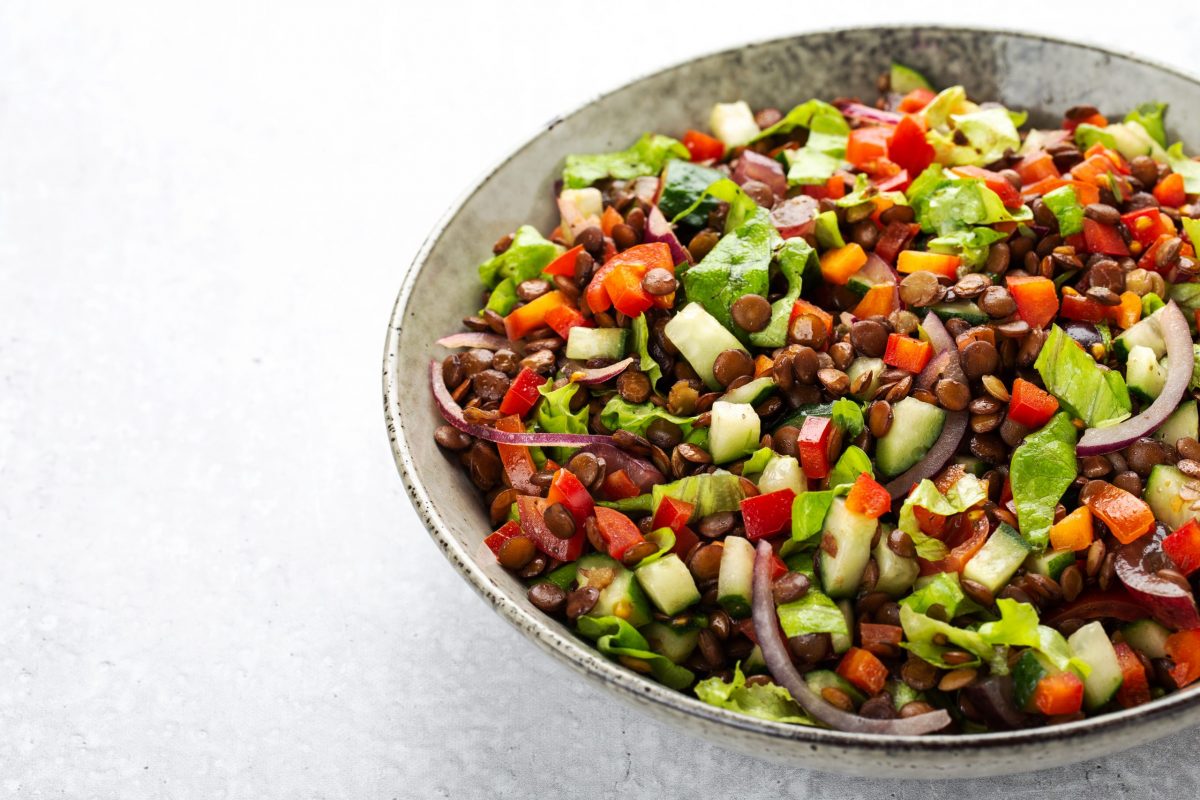Protein sources for plant-based diets include seitan, soy milk, nuts, seeds, spirulina, tofu, lentils, beans, green peas, chickpeas, quinoa, and amaranth.
Veganism and vegetarianism are gaining momentum in the recent past for health purposes, animal care, and religious reasons. With the rise of nutritious and fortified plant-based diets, a shift to veganism is today easier without the concern of losing out on some nutrients. Research conducted by the Academy of Nutrition and Diabetics indicated that vegans’ and vegetarians’ diets could provide all the nutrients needed by children, adults, and pregnant or breastfeeding mothers. Nonetheless, getting all the essential nutrients in the body for a person who excludes animal products in their diet can be very challenging. Proper planning is needed to ensure one’s diet has adequate protein, iron, calcium, and vitamin B-12.
How much protein is needed in the body?
The body utilizes protein as a major building block in making tendons, skin tissues, and muscles. According to studies, healthy adults need approximately 0.36 grams of protein intake forever every pound, meaning that a person weighing 150 pounds will need 54 grams of protein daily. However, athletes, pregnant or breastfeeding women may need more than this figure. The amount of protein requirement per person will vary greatly depending on several factors such as muscle mass and activity levels. Since it could be tedious to determine how much protein each person should eat, the doctors often advise that you ensure you are eating some protein in every meal. A feeling of hunger shortly after meals or fatigue may indicate low protein in your diet and the need to add to it.
Sources of proteins for vegans and vegetarians
Veganism and vegetarianism advocate for moving away from animal products to a plant-based diet to help save the planet and better health. Below are plant-based diets that have proteins for this group of individuals.
Seitan
Its protein content comes from gluten and has a texture and look similar to meat when cooked. It is sometimes called wheat meat, and it boasts 25 grams of protein for every 100 grams making it the richest protein source among plants. It also contains selenium coupled with phosphorous, iron, and calcium minerals. It is found in healthy food stores, or you can make your own at home. Interestingly, seitan can be grilled, pan-fried, or sauteed just like meat and incorporated in various recipes. Individuals with celiac disease should not use seitan as a source of protein.
Edamame, Tofu and Tempeh
These products originate from soybeans, a legume rich in proteins; thus, they can provide all the required amino acids in the body. The immature soybeans are called edamame and often sweet with a grassy taste when boiled or steamed. They are often used in salads, soups, or eaten alone. Tofu is made like cheese using soy milk, and tempeh comes from a cooked, fermented mature soybean before it is pressed into a patty. Tofu and tempeh are utilized in making various recipes such as burgers, chills, and soups. These products contain between 10-19 grams of protein for every 100 grams. They also have essential minerals such as calcium, iron, folate, fiber, and vitamin K. Since tempeh is fermented, it is a good source of probiotics, phosphorus, magnesium, and B vitamins.
Lentils
Lentils are one of the greatest providers of protein in the legume world. For every cup of lentil, there is 18grams of protein. Lentils are versatile and could be used in various recipes and dishes, ranging from hearty soups to fresh salads and spice-infused dahls. A cup of lentils also provides 50% of your daily fiber intake. Studies show that lentil fiber provides need food for friendly bacteria in the large intestine. It could also promote the general health of your heart, reduce the risk of diabetes, and aid in weight loss. Lentils are also rich in antioxidants, folate, iron, and other healthy plant compounds.
Beans and chickpeas
Several beans such as black, kidney, pinto, and other bean varieties have a considerably high amount of proteins per servings. Chickpeas, also called garbanzo beans, are also another legume that has a high amount of protein. Most cooked legumes contain 15grams of protein for every 100grams. Additionally, they are a source of folate, iron, potassium, magnesium, fiber, and complex carbs. A bean-rich diet has also been shown to reduce cholesterol levels and help in controlling blood sugar and blood pressure.
Teff and spelt
Teff and spelt fall in the category of ancient grains. Spelt is a form of wheat grain with gluten, whereas teff comes from grass and gluten-free. These two products can contribute 10-11 grams of protein for every cooked cup, thus providing higher protein levels than any other ancient grains. Additionally, they are good sources of folate, iron, potassium, magnesium, fiber, zinc, and complex carbs.
Green peas
This sweet taste product is often served alongside popular dishes and contributes nine grams of protein in every 240ml cup of peas. It could provide you with 25% of your daily need for vitamin C, A, K, fiber, folate, thiamine, and manganese. There are also known to contain zinc, iron, phosphorus, and copper.
Spirulina
It is a blue-green alga and is considered a nutritional powerhouse by many researchers. For example, a tablespoon of spirulina (30ml) contains 8grams of protein and provides you with 22% of an individual’s daily need for thiamine and iron. Similar amounts of spirulina also provide copper 42% of the DV. It also has several essential minerals, including riboflavin, potassium, magnesium, and almost all the necessary fatty acids. Its green colouring matter has important anti-inflammatory, antioxidant, and anti-cancer properties.
Quinoa and Amaranth
Though they are pseudo cereals, they are ground and prepared just like common grains. A cup of these products provides between eight to nine grams of protein. Additionally, they are considered good sources of iron, fiber, magnesium, phosphorus, and complex carbs.
Nuts and other seeds
Nuts and their derived products like nut butter is an excellent source of protein. Studies show that 28grams of nuts can contain 5-7 grams worth of protein depending on the nut type and seed variety. Seeds and nuts also boast healthy fats and fiber-coupled with certain minerals such as selenium, calcium, phosphorus, iron, and vitamin E and B.
Soy milk
Soy milk is often fortified with vital minerals and vitamins, often used as an alternative to cow milk. Every cup (240ml) of soy milk has seven grams of protein plus vitamin B-12, D, and calcium.
The bottom line
Whatever the reason for ditching meat for vegetables and a plant-based diet, there are many nutritious alternative sources of protein for you. Some legumes such as lentils, beans, and peas are good protein sources for vegans and vegetarians. Other sources like quinoa, spelt, spirulina, nuts, and soy milk are also available for those who want to join the veganism or vegetarianism bandwagon.
- Is Mushroom Coffee Worth the Hype? An Expert’s Take - April 19, 2024
- Missionary Position – Least Likely To Bring You To Climax - April 7, 2023
- Vibrators could put you in Jail - March 31, 2023






